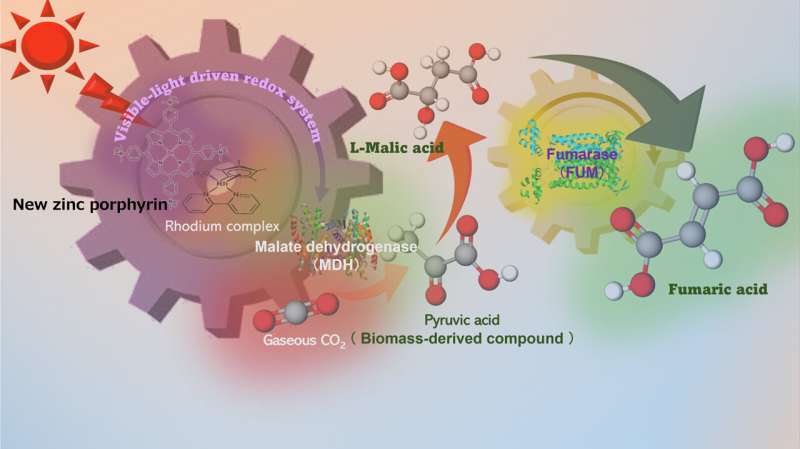This article has been reviewed according to Science X's editorial process and policies. Editors have highlighted the following attributes while ensuring the content's credibility:
fact-checked
trusted source
proofread
Advanced artificial photosynthesis catalyst uses CO₂ more efficiently to create biodegradable plastics

Amid growing global concern over climate change and plastic pollution, researchers at Osaka Metropolitan University are making great strides in the sustainable production of fumaric acid—a component of biodegradable plastics such as polybutylene succinate, which is commonly used for food packaging.
The researchers have managed to efficiently produce fumaric acid, which is traditionally derived from petroleum, using renewable resources, carbon dioxide, and biomass-derived compounds.
In a previous study, a research team led by Professor Yutaka Amao of the Research Center for Artificial Photosynthesis at Osaka Metropolitan University demonstrated the synthesis of fumaric acid from bicarbonate and pyruvic acid, a biomass-derived compound, using solar energy. They also succeeded in producing fumaric acid using carbon dioxide obtained directly from the gas phase as a raw material. However, the yield in the production of fumaric acid remained low.
In their latest research, published in Dalton Transactions, the researchers have now developed a new photosensitizer and further advanced an artificial photosynthesis technique that doubles the yield of fumaric acid compared to conventional methods.
"This is an extremely important advancement for the complex bio/photocatalyst system. It is a valuable step forward in our quest to synthesize fumaric acid from renewable energy sources with even higher yields, steering us toward a more sustainable future," said Professor Amao.
More information: Mika Takeuchi et al, An effective visible-light driven fumarate production from gaseous CO2 and pyruvate by the cationic zinc porphyrin-based photocatalytic system with dual biocatalysts, Dalton Transactions (2023). DOI: 10.1039/D3DT03492E
Provided by Osaka Metropolitan University




















